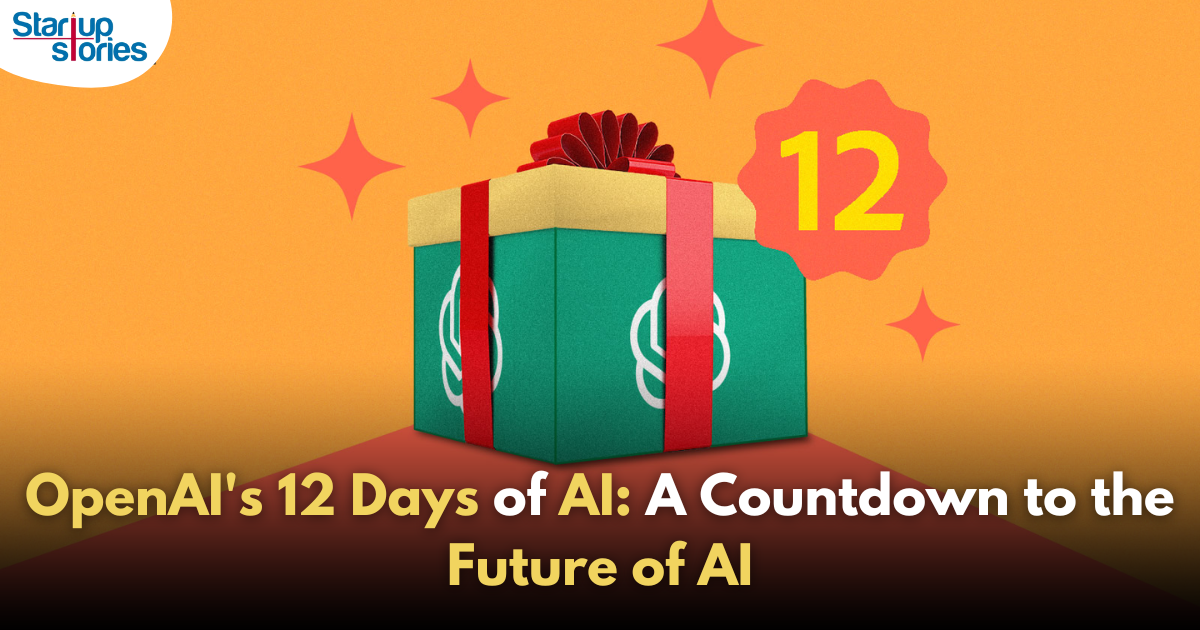OpenAI is set to unveil a series of exciting new features, products, and demos over the next 12 days, starting December 5th. This festive season, the AI powerhouse is bringing a special gift every day, culminating in the highly anticipated launch of Sora, its groundbreaking AI-powered video generation model.
What is Sora?
Sora is designed to revolutionize video creation by allowing users to generate realistic and detailed videos from simple text prompts. Similar to how AI models like DALL-E and Midjourney have transformed image generation, Sora aims to do the same for video, making it accessible for a wide range of creative applications.
Key Features of Sora
- Text-to-Video Generation: Users can input detailed text prompts, such as “a futuristic city with flying cars,” to create stunning video visualizations. The model can generate videos that range from simple animations to complex narratives.
- High Fidelity Output: Sora can produce videos up to one minute long, maintaining high visual quality and adherence to user instructions. This capability allows for the creation of engaging content suitable for various platforms.
- Interactive Elements: The model supports multiple characters and specific motion types, enabling users to craft dynamic scenes that reflect their creative vision.
A Glimpse into the Future of AI Video
While Sora is not yet publicly accessible, early demonstrations have showcased its impressive capabilities. The ability to generate videos from text prompts opens up new possibilities for content creators in fields such as marketing, entertainment, and education.
Road to Public Access
OpenAI has been gradually refining Sora through a series of tests and feedback loops. Initially, the model was accessible to a selected group of developers and artists who provided valuable insights into its strengths and limitations. However, recent leaks and controversies have temporarily halted public access.
Recent Controversies
A group of artists recently leaked access to Sora in protest against what they described as “art washing” by OpenAI. They created a front end that allows users to generate short videos using the Sora API, raising questions about ethical practices surrounding AI-generated content 1.
A Bright Future for AI Video
Despite the setbacks, OpenAI remains committed to making Sora available to the public. The company envisions a future where AI-powered video generation becomes a powerful tool for creators, filmmakers, and businesses alike.
Industry Implications
As more creators adopt AI tools like Sora, we can expect significant shifts in how video content is produced and consumed. This technology could democratize video creation, allowing individuals without extensive technical skills to produce high-quality visual narratives.
Conclusion
OpenAI’s 12 Days of Christmas promises exciting advancements in AI technology, with Sora leading the charge in transforming video generation. As the company continues to refine this innovative model and address current challenges, it aims to empower creators with tools that enhance storytelling capabilities and expand creative horizons. Stay tuned for more updates as OpenAI unveils its festive innovations!


Открыть счет на binance
April 8, 2025 at 1:07 am
Your point of view caught my eye and was very interesting. Thanks. I have a question for you.
b^onus de inscric~ao na binance
May 10, 2025 at 11:25 am
Thanks for sharing. I read many of your blog posts, cool, your blog is very good.
Ijzlfueh
May 23, 2025 at 10:57 am
Explore the ranked best online casinos of 2025. Compare bonuses, game selections, and trustworthiness of top platforms for secure and rewarding gameplaycasino bonus.
n9rk9
June 7, 2025 at 1:08 am
cost of generic clomid for sale clomid tablet price buy cheap clomiphene tablets where buy cheap clomiphene cost of clomid how can i get cheap clomid price cost cheap clomiphene pills
binance
June 30, 2025 at 6:18 am
Your article helped me a lot, is there any more related content? Thanks!
binance
August 30, 2025 at 9:17 am
Your article helped me a lot, is there any more related content? Thanks! https://accounts.binance.com/register?ref=P9L9FQKY
MM88
November 7, 2025 at 2:57 pm
Với giao diện mượt mà và ưu đãi hấp dẫn, MM88 là lựa chọn lý tưởng cho các tín đồ giải trí trực tuyến.
Kuwin
November 7, 2025 at 7:42 pm
kuwin sở hữu kho game đa dạng từ slot đến trò chơi bài đổi thưởng, mang đến cho bạn những giây phút giải trí tuyệt vời.
谷歌外推
November 9, 2025 at 4:57 pm
采用高效谷歌外推策略,快速提升网站在搜索引擎中的可见性与权重。谷歌外推
iwin
November 13, 2025 at 11:08 am
iwin – nền tảng game bài đổi thưởng uy tín, nơi bạn có thể thử vận may và tận hưởng nhiều tựa game hấp
GO88
November 21, 2025 at 4:41 pm
Tham gia cộng đồng game thủ tại Go88 để trải nghiệm các trò chơi bài, poker phổ biến nhất hiện nay.
MM88
November 29, 2025 at 9:17 am
Khám phá thế giới giải trí trực tuyến đỉnh cao tại MM88, nơi mang đến những trải nghiệm cá cược thể thao và casino sống động.